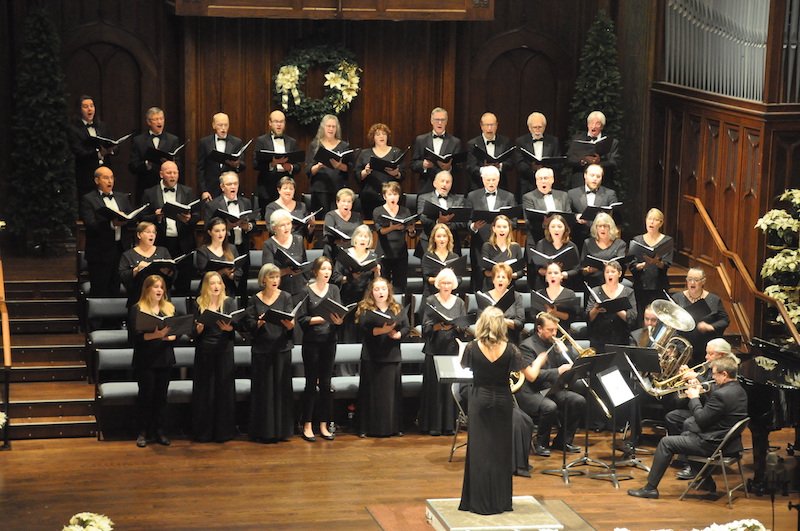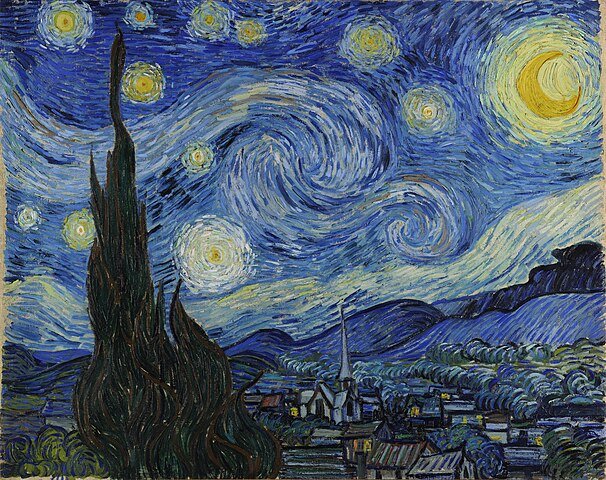O Magnum Mysterium
December in Michigan
Photo by Robert Thiemann on Unsplash
December in Michigan is a season of mystery. Snowfalls cloak the earth in quietude. Daylight slips away, only to return after the winter equinox. While celebrating Hanukkah or Yule or Christmas or Kwanzaa, we scramble to survive the gift-giving blowout on which consumer capitalism depends. If we’re honest, we don’t really know why shopping and celebrating need to combine.
Amid snowfalls and darkness and celebrations, reminders drift over us of the great mystery. They drift over us in many forms: restful warmth, festive lights, gestures of generosity. My favorite form is choral music. I love to sing it, to listen to it, to share it with others. Fortunately, in the cities where Joyce and I have lived—most recently in Toronto and Grand Rapids—choral music fills the air.
Choral Music
Chamber Choir of Grand Rapids in concert, November 25, 2023. Photo by Chris Schwan.
Recently the Chamber Choir of Grand Rapids presented our Sounds of Christmas concert. Alongside baroque compositions by Sweelinck and Handel, we sang mostly pieces by contemporary American composers. The highlight for me, and for many other singers and audience members, I suspect, was “O Magnum Mysterium” (O Great Mystery) by Morten Lauridsen.
Written nearly forty years ago when Lauridsen was in his early fifties, “O Magnum Mysterium” is a crowning gem of contemporary choral music. He describes its birth in a fascinating video from the University of Southern California’s Thornton School of Music, where he is distinguished professor of composition. Elsewhere, Lauridsen has said he wanted his a cappella motet “to resonate immediately and deeply into the core of the listener.” It does exactly that, not only for the listener but for anyone who sings it.
The text, which comes from a medieval Gregorian chant for Christmas Day, reflects on the mystery of Jesus’ birth. Actually, there are two mysteries: that humble animals were the first to witness it, and that Mary gave birth. Here’s the Latin text in Lauridsen’s setting and an English translation:
O magnum mysterium, O great mystery,
et admirabile sacramentum, and wonderful sacrament,
ut animalia viderent Dominum natum, that animals should see the newborn Lord,
jacentem in praesepio! lying in a manger!
Beata Virgo, cujus viscera Blessed virgin, whose womb
meruerunt portare was worthy to bear
Dominum Christum. the Lord [Jesus] Christ.
Alleluia! Alleluia!
Profound Simplicity
The piece begins in hushed suspension, an effect created by Lauridsen’s using the early-Renaissance technique of fauxbourdon (false drone). The opening chords to the words O magnum mysterium are in first inversion, and the voice parts move downward in parallel motion. Although a challenge for basses, who usually begin on the root of the chord, this technique creates the vocal effect of floating in midair, even when the phrase lands on a first cadence in measure 4.
That’s just one example of compositional brilliance. In the recording I’ve linked (be sure to use headsets or ear buds!), listen for the aching dissonance of the altos’ G-sharp on the word Virgo, expressing a mother’s deep future-oriented pain (just after minute 3:45). Marvel at the rich eight- and nine-part harmony as the first Alleluia swells (beginning at minute 4:33). Sink into the infinite calm with which, at the end, the voices, in their lowest registers, drift away (minutes 6:03 to7:04). Using mostly primary chords (I, IV, and V) and adding just the right harmonic enrichments, Lauridsen has created a choral masterwork of profound simplicity.
Detail from the fresco No. 17 Scenes from the Life of Christ: 1. Nativity (1304-1306) by Giotto , Public domain, via Wikimedia Commons
As a singer, I find the passage about the animals deeply stirring. Listen around minute 2:35 as the altos quietly introduce ut animalia (“that animals”) while the other voices conclude the phrase O magnum mysterium. Next all parts sing viderent Dominium (“should see the [newborn] Lord”) in simple chordal progression. Then, repeating ut animalia (“that animals”), the sopranos sing the altos’ phrase an octave higher, soaring up to a high G, while the other voices, in their upper registers, give contrapuntal support—before all subside into a contemplative viderent Dominum natum, jacentem in praesepio (“should see the newborn Lord, lying in a manger”). In just a few measures, Lauridsen has captured both the glory and the humility of the animals’ presence.
Animals as Witnesses
How did the animals get here? That’s part of the mystery. The original story of Jesus’ birth does not mention animals near the manger where Mary laid the baby Jesus (Luke 2:1-20; the other gospels don’t give parallel accounts). And it’s doubtful that the shepherds brought their sheep to see the newborn child. In fact, the story does not say they did.
Scholars think the Christmas tradition has imported the animals that witness Jesus’ birth from a passage in Isaiah where the prophet mentions donkey, ox, and manger. This occurs at the beginning of a lengthy divine diatribe against God’s people for their evildoing, where only the animals seem to get things right:
I reared children and brought them up,
but they have rebelled against me.
The ox knows its owner,
and the donkey its master’s crib;
but Israel does not know,
my people do not understand. (Isaiah 1:2-3, NRSV)
Painting (ca. 1450) by Master of the Nativity of Castello , Public domain, via Wikimedia Commons
Through the enigmatic Christmas tradition, Isaiah’s humble counterexamples to human infidelity and failure have become first witnesses to the great mystery. For hundreds and hundreds of years, no complete Christmas crèche has lacked an ox and donkey. Often we forget, however, that they may be more faithful witnesses than we are to what the Latin text calls the birth of God (ut animalia viderent Dominum natum).
Great Mystery
The Starry Night (1889), oil painting by Vincent van Gogh , Public domain, via Wikimedia Commons
This, to me, is part of the great mystery. The great mystery is the question why evil pervades our lives and society. It’s the puzzle why we participate in this evil and perpetuate the suffering under which all creatures, including the animals, groan. It’s also the mystery, the genuine mystery, of why, despite everything, we can still hope that divine love and a spirit of goodness will prevail.
You do not need to embrace all the inherited trappings of Christmas in order to have and celebrate such hope. Yet perhaps, listening to Lauridsen’s simply profound “O Magnum Mysterium,” with its very traditional text, you’ll find yourself transported, like the animals, to a world made new; a world where, mysteriously, divine love is with us; a world where, in whatever ways we can, we share such love and help give birth to the goodness of God.
Note: This is my last post for 2023. I launched the Love [of] Wisdom blog a half year ago, in June. Writing it has been a joyous journey of discovery and self-discovery. Thank you for walking with me. I look forward to reconnecting in January. Happy Hannukah! Merry Christmas! And a Blessed New Year!




